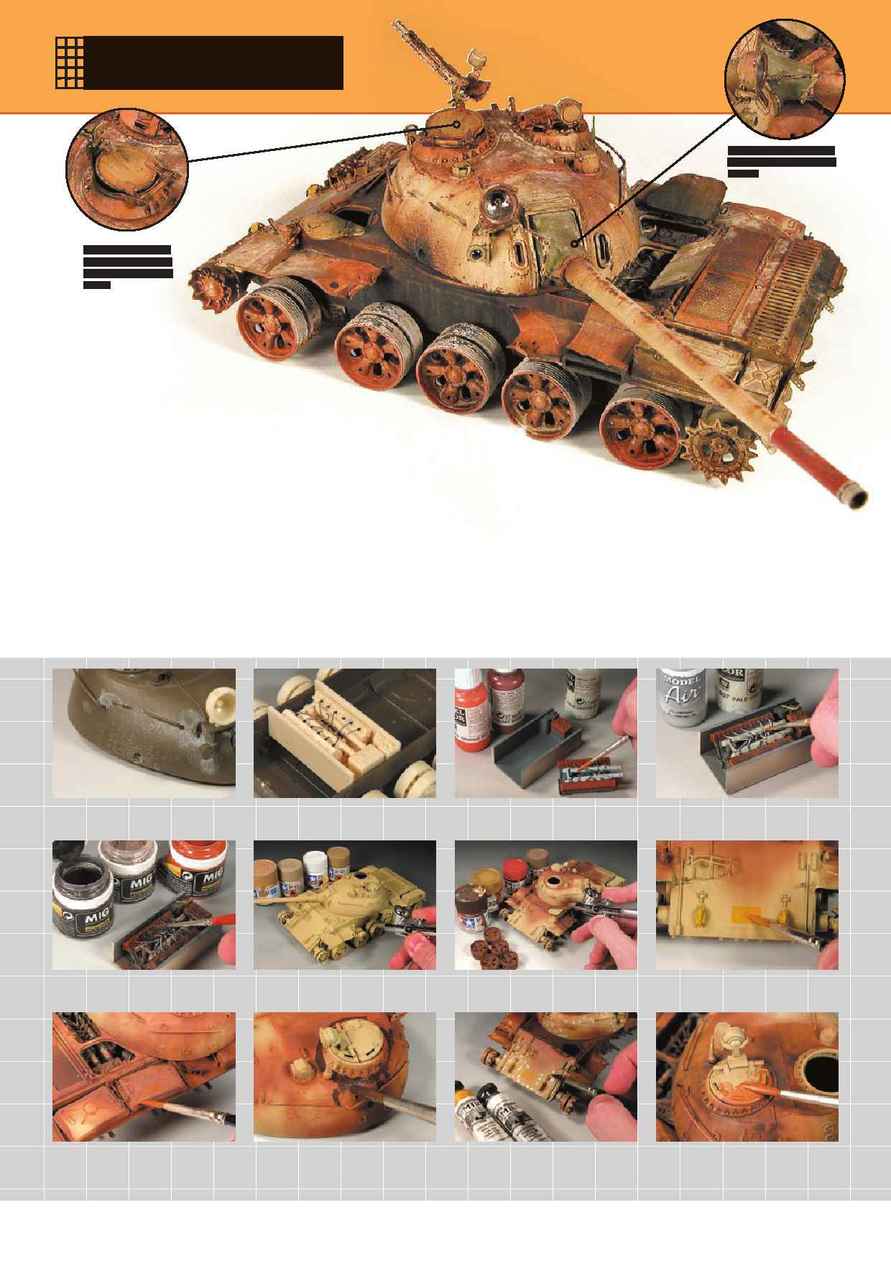
May 2006 - Model Military International
7
Tech Guide
The effect of the impact was made with a dental
burr in a mini drill.
It is necessary to reconstruct the cables and
engine details, but they should also be lightly
deteriorated.
A coat of dark grey primer was applied by air-
brush. The details will be painted with Vallejo
Colors and a brush.
After applying several washes with dark colors,
more details were painted using metallic colors,
and white for the electrical wires.
Finally we will add different pigment colours
mixed with turpentine in a random way to create
a rusted and smoked effect.
Now, we will apply the base color with an airbrush
using Tamiya paint, in the same way as a normal
base colour in a non-destroyed tank.
Using different red-rust colors, we will apply
these mixes in random areas, trying to make it as
much irregular as possible.
Some details were brush painted using Vallejo
colors in several layers.
With Vallejo orange, we will paint random `map-
pings', or lines and patches of highlight colour.
It is similar to a chip, but bigger and covering
large areas.
We will begin to apply more contrast, this time,
using oil colours, blended in with turpentine.
Using small quantities of oil paint, we will make a
streaked effect, simulating faded colours.
After contrasting, we will continue painting cer-
tain parts with clearer colours.
It is necessary to reconstruct
the cables and engine details,
but they should also be lightly
deteriorated.
It is necessary to reconstruct
the cables aso be lightly dete-
riorated.
TOTAL KNOCK OUT!
Miguel Jimenez describes in depth how to create a
knocked out and brewed up tank, in this case Tamiya's T-55.
I
f there had ever been a time
when modellers learned to
make models of burnt out
or destroyed vehicle, it was
in 1991, during the Gulf War. Back
in those days we observed with
astonishment the first colour pho-
tos of destroyed T-55, exploded
by Hellfire or Tow, perforated by
Apache's guns or hit by of 120mm
shells of M1 Abrams, overcoming
our imagination. I believe that
when we became aware of these
images, we realised that making
a destroyed tank could transmit
much more emotion than a nor-
mal tank. Many colours flooded
the surface of those T-55s, the
gnarled iron screamed in pain,
and the ash of the burnt rubber
tyres formed mountains of snow
under their wheels. With all the
respect that is owed to war and
their victims, the modeller can
represent these destructive as
something beautiful and colourful.
But far away from these artistic
and romantic concepts, making a
model of a destroyed tank requires
a great powers of observation and
complex techniques of painting.
Techniques that can be applied to
any tank from any time, because
all tanks burn equally, now and 60
years ago...
